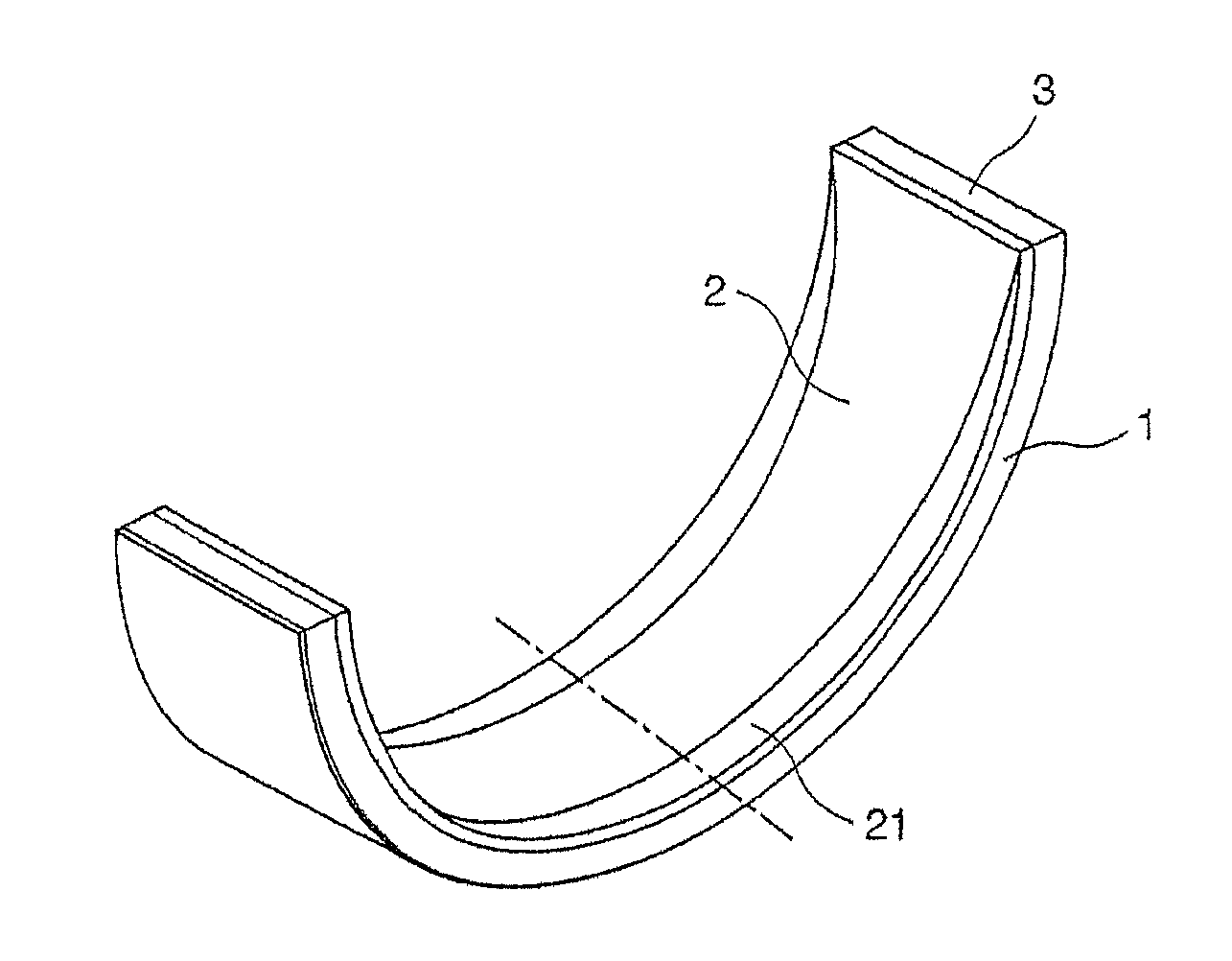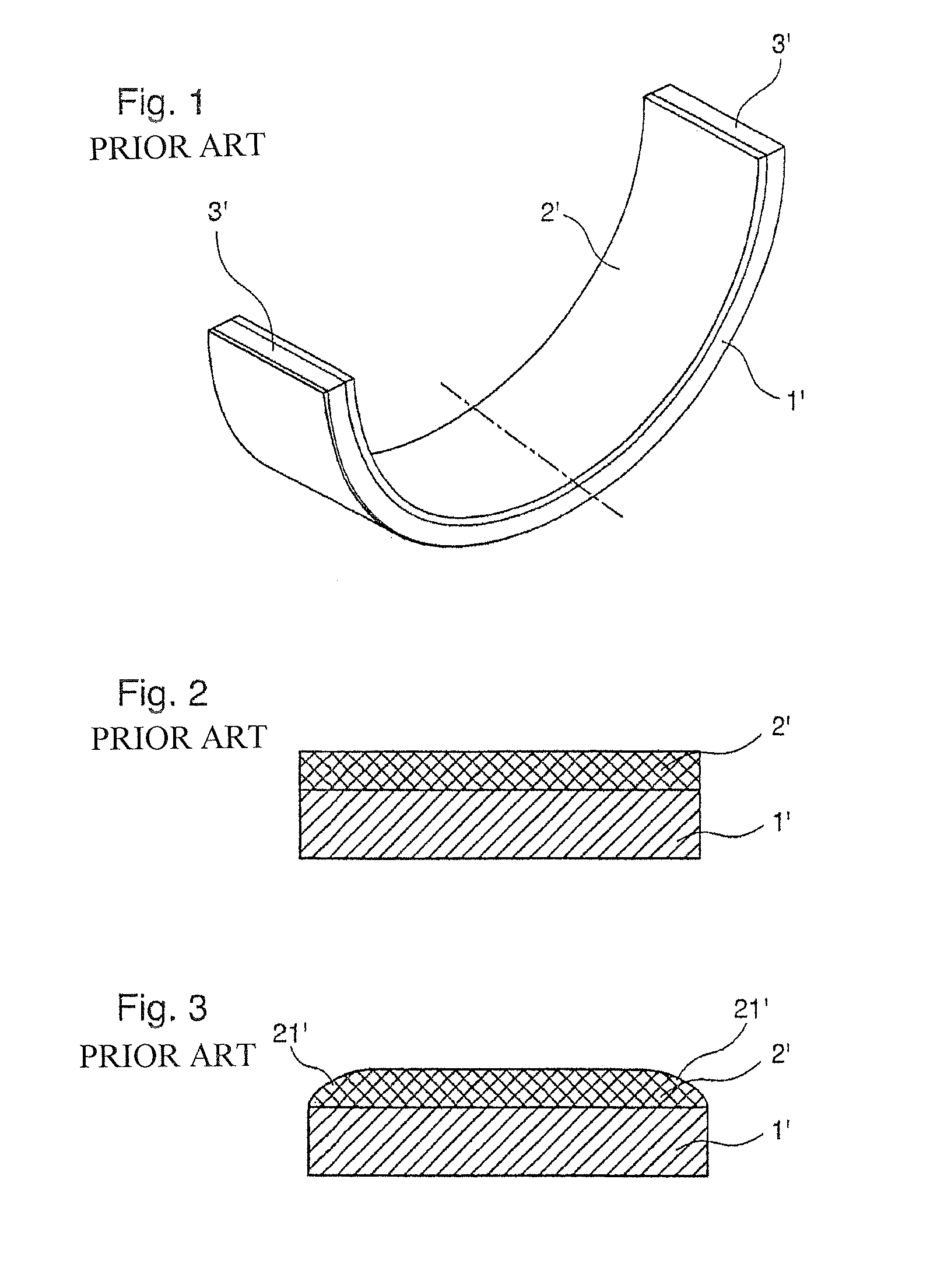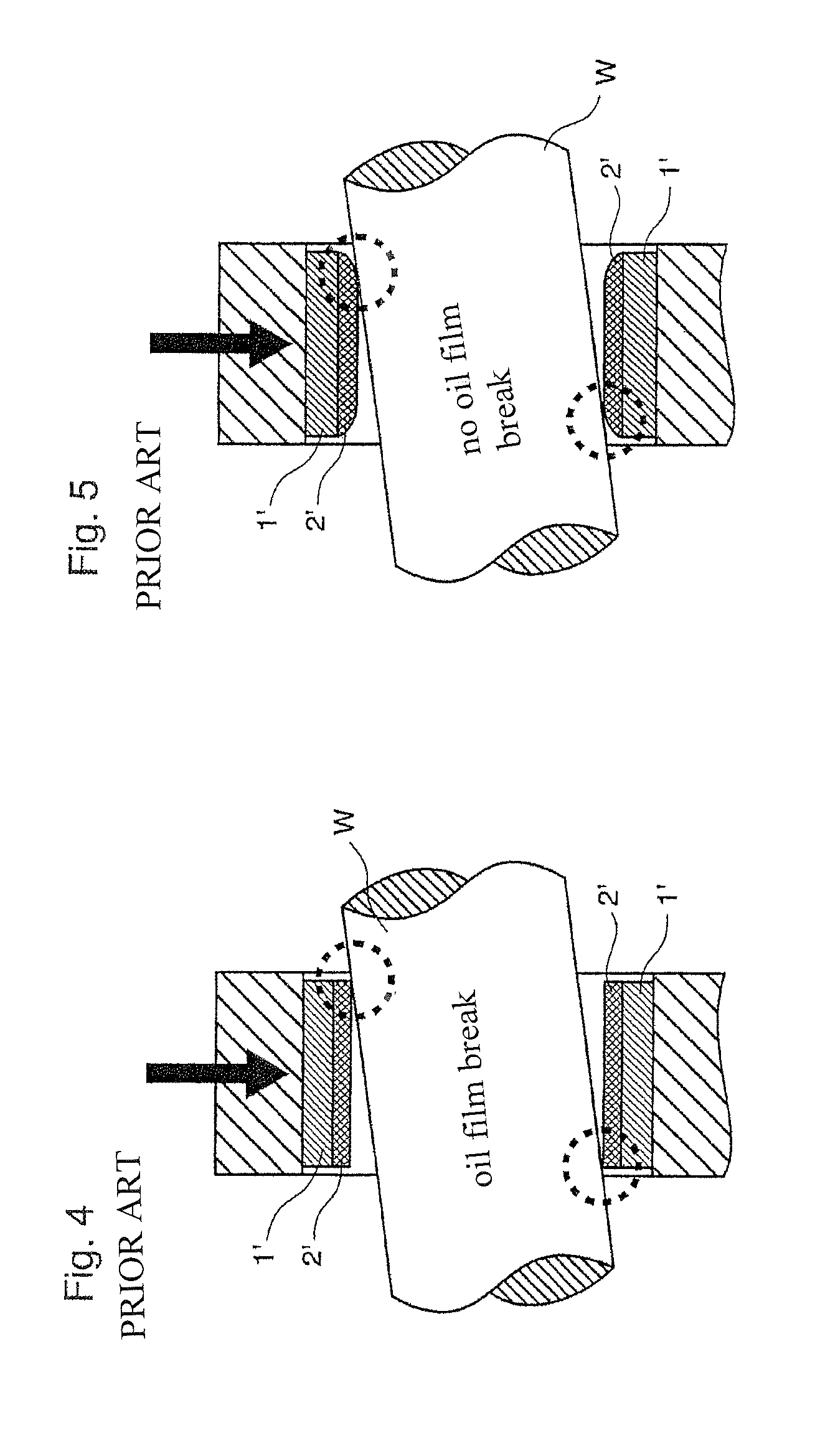Plain bearing shell with slide face surface geometry which is profiled in the axial direction
a surface geometry and bearing technology, applied in the direction of bearings, sliding contact bearings, shafts, etc., can solve the problems of affecting the operating affecting the operation performance of the engine, and a large amount of oil loss at the plain bearing position, so as to reduce the probability of oil film tear, reduce effort, and maintain the guiding accuracy of the shaft in the bearing.
- Summary
- Abstract
- Description
- Claims
- Application Information
AI Technical Summary
Benefits of technology
Problems solved by technology
Method used
Image
Examples
Embodiment Construction
[0039]FIG. 6 shows a bearing shell 1 having a slide face profile 21 rounded off convexly at the edge regions (viewed in the axial direction of the bearing shell 1), the convex curvature tapering off toward the partial surfaces 3.
[0040]As a result of the curvature 21 at the edge regions, the impacts of a bending or tilting of a shaft in the bearing shell 1 operating under a load are mitigated with respect to wear and operating characteristics since the probability of an oil film tear at the edge of the bearing shell 1 is reduced. It should be noted that the curvature in FIGS. 3, 5, 6 and 7A to 7D is greatly exaggerated for illustrative purposes.
(Section A-A)
[0041]According to FIG. 7A, the profile of the slide face 2 at the apex of the plain bearing shell 1 is convexly curved in the axial direction over the entire length thereof with a constant curvature radius. This profile continuously decreases and tapers off toward the two partial surfaces 3 in the circumferential direction of the...
PUM
| Property | Measurement | Unit |
|---|---|---|
| thickness | aaaaa | aaaaa |
| thickness | aaaaa | aaaaa |
| thickness | aaaaa | aaaaa |
Abstract
Description
Claims
Application Information
 Login to View More
Login to View More - R&D
- Intellectual Property
- Life Sciences
- Materials
- Tech Scout
- Unparalleled Data Quality
- Higher Quality Content
- 60% Fewer Hallucinations
Browse by: Latest US Patents, China's latest patents, Technical Efficacy Thesaurus, Application Domain, Technology Topic, Popular Technical Reports.
© 2025 PatSnap. All rights reserved.Legal|Privacy policy|Modern Slavery Act Transparency Statement|Sitemap|About US| Contact US: help@patsnap.com



